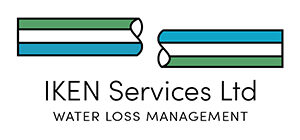Active leak detection is instrumental in finding unreported water leakage and losses within distribution systems.
The water distribution system is surveyed to pinpoint water losses from buried infrastructure. Finding and repairing water losses through an active leak detection program reduces water loss and in many cases, saves the municipality substantial money. Emergency repair is much more expensive than planned, scheduled repair. Without a leak detection program, leaks may only be found when they become visible at the surface or when major infrastructure collapses.
Cautionary note about leak detection programs;
A leak detection program is normally undertaken by the municipality for publicly owned water distribution systems. However there can be many private water infrastructures in many municipalities (e.g., condominium complexes, federal lands, shopping centres, private lands, service laterals, etc.). Water loss on these properties can be substantial.
If a municipality does not meter the water entering these private systems at the property line, substantial, unmetered water may be lost within these systems. The impact of private water systems on the overall water loss within a municipality should be assessed before undertaking (or requiring the private water system owner to undertake) a leak detection program on private infrastructure.
The Leak Detection Process
Leak Acoustic Sounding
The theory of acoustic sounding is to listen on the pipe at direct contact points along the pipeline using electronically amplified tools that enhance the frequencies that occur from the friction of the water leaving a pressurized pipe. The same tool can be used to walk over the pipeline and listen with a ground microphone. The drawback to this type of survey is that it is often restricted to areas that have little background or ambient noise. If the pipe is in close proximity to high decibel readings, there may be complications.
Leak Loggers
Noise loggers are microphones or accelerometers that have memory and software capable of listening for long durations to help determine whether a noise is constant or intermittent. A logger left on a direct contact point will turn on and listen at different intervals to determine if a significant decibel reading has been maintained with a constant frequency range. Most leaks maintain a specific decibel as well as frequency range. Data can be analyzed to determine proximity to a leak.
Leak Correlation
Correlators were developed in the 1980’s to help pinpoint leak locations. The concept is to introduce two or more accelerometers simultaneously and measure results between the sensors. With specific calculations involving speed of sound, frequency and length of main between the sensors, an area can be identified along the pipe length. Accuracies for large diameter pipelines vary based on speed of sound and the ability of the leak to resonate sound over the mass of pipe between the sensors.
Leak Survey Techniques
Typical leak surveys incorporate acoustic sounding, noise logging and leak pinpointing with leak correlators. Average coverage per day ranges between 4 and 8 kilometers. Production is based on the amount of background noise such as traffic and consumption. Some pipe materials such as PVC and HDPE do not resonate sound well and therefore hinder the survey process.
Leak Pinpointing
Leak pinpointing utilizes the Correlator to identify the actual location to dig.
Permanent & Semi-Permanent Leak Listening
In recent years the concept of permanent listening devices on water systems has been trialed. Areas of specific concern with high probability or high impact of failure either economically or socially are continuously monitored. Continuous data provides a baseline for expected system parameters and any changes in these readings can lead to quicker and better responses to system failures. Cost analysis is necessary before implementation.
